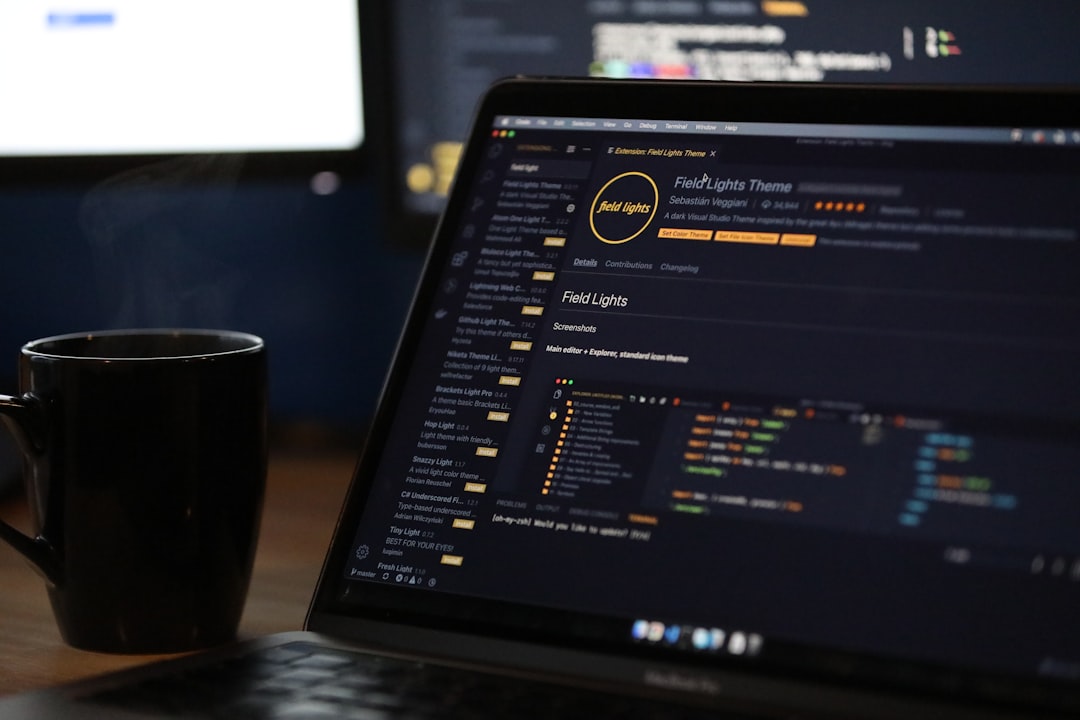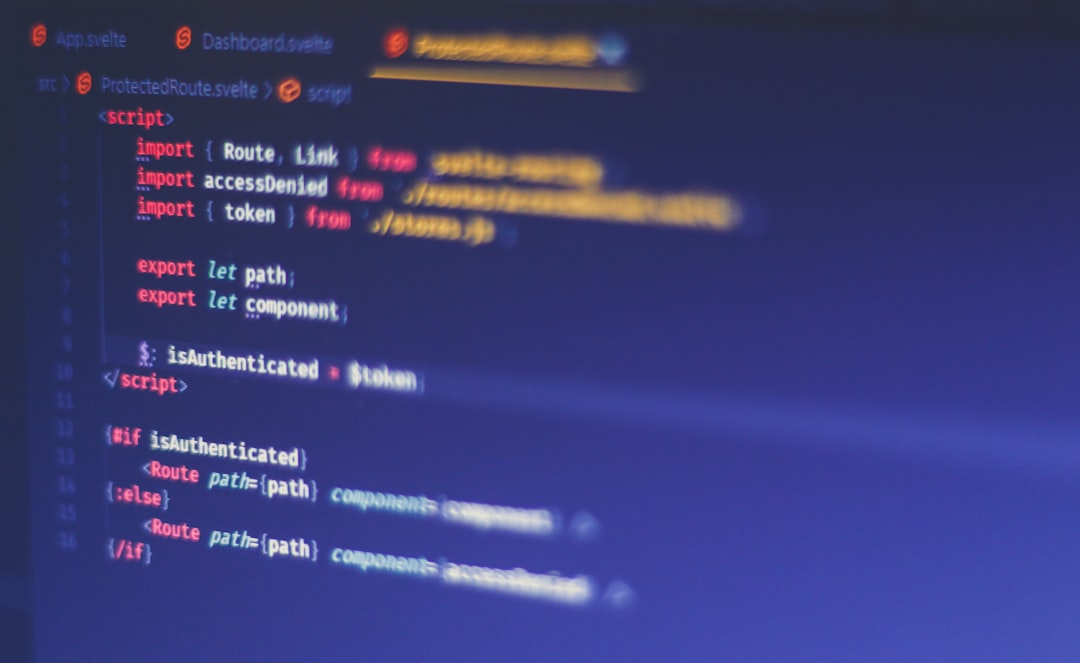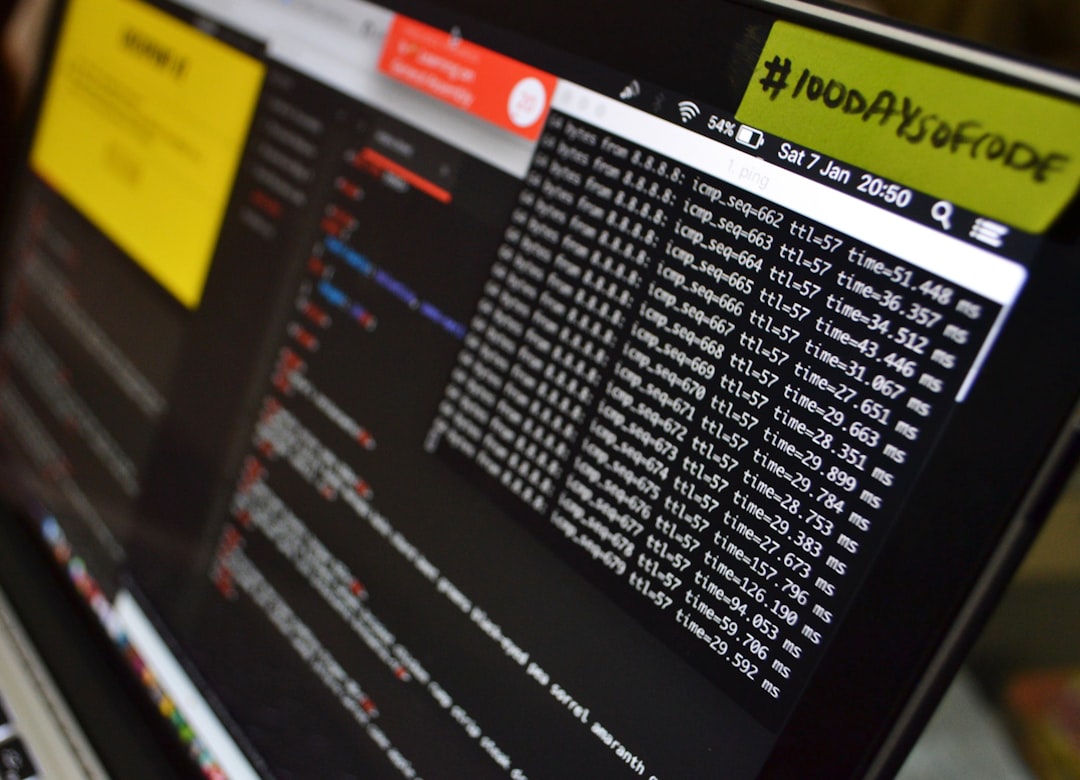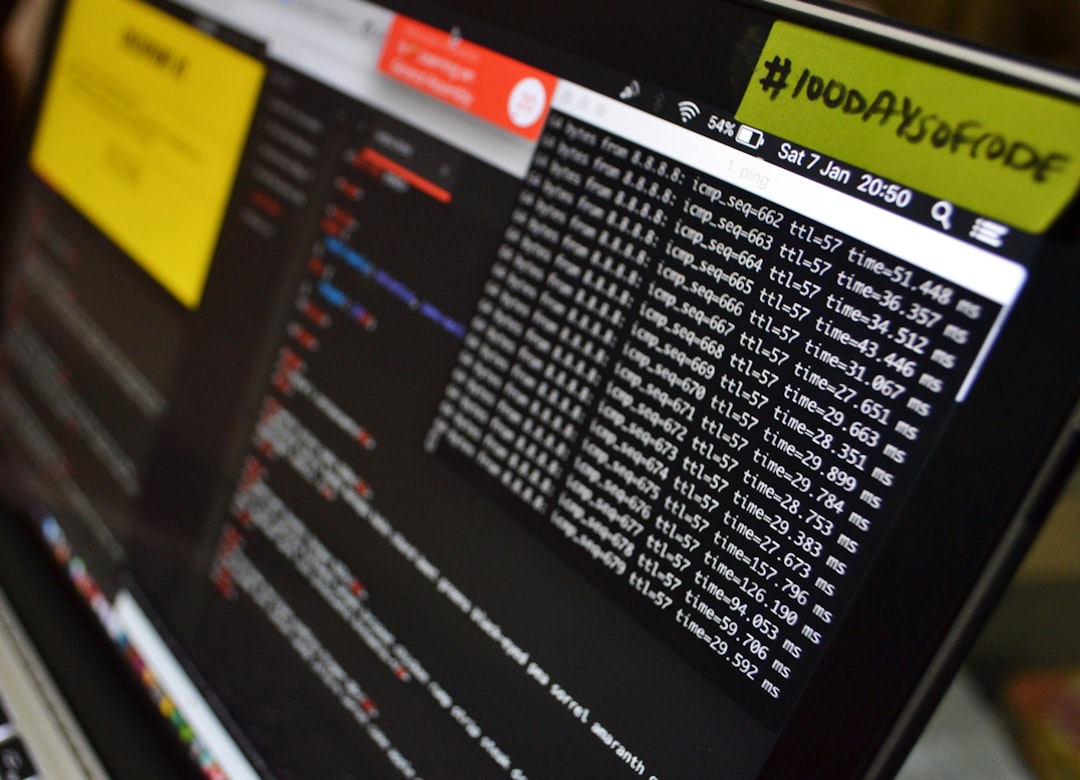Quick Guide Checking jQuery Version in Browser Console as of 2024
Quick Guide Checking jQuery Version in Browser Console as of 2024 - Opening the Browser Console in 2024
Accessing the browser console in 2024 is still a basic maneuver, consistent across most web browsers. A simple right-click on any web page and selecting "Inspect" or "Inspect Element," followed by choosing the "Console" tab within the developer tools, is all it takes. This built-in feature grants users access to the website's JavaScript environment, making it helpful for troubleshooting or investigating things like the jQuery library. With the console open, it's a breeze to check the active version of jQuery, if it's present, using commands like `console.log(jQuery.fn.jquery)`. This shows how user-friendly and easily accessible the console is. It's worth remembering though, that if jQuery isn't loaded, the console won't reveal anything, potentially requiring you to dig into the website's source code to find out more.
1. While many of us know the keyboard shortcuts (F12 or Ctrl+Shift+I) to open the browser console, it seems like we still haven't fully embraced its potential. It's more than just a debugging tool; it's a surprisingly powerful gateway to understand what's happening on a page.
2. The console's role has broadened. We can now run JavaScript directly within the context of the webpage, making it a playground for manipulating elements, sending AJAX requests, or experimenting with code in real time. It's like having a live code editor integrated into the browser.
3. A detail many may not realize is the ability to filter console outputs based on their severity. Want to focus on errors only, or perhaps just warnings? Browsers offer the ability to refine what's displayed, cleaning up the mess for better focus.
4. It's interesting how the console has incorporated performance profiling. In 2024, some browsers offer this feature directly, bypassing the need for extra tools. We can dig into what parts of code are taking the longest and try to optimize execution from within the console.
5. Collaboration has even found its way into the console. Features like real-time log sharing can make debugging a team effort, streamlining the process by reducing back-and-forth communication.
6. It seems we've reached a point where we can customize the console to fit our preferences. This means more readable layouts, new features, themes, and the use of various scripts to tune the console to be more aligned with our needs.
7. It's fascinating to see the inclusion of WebAssembly support in modern browser consoles. Engineers can now experiment with code written in languages like C or Rust and run it directly in the browser.
8. The networking aspect of the console is something that often goes overlooked. But we can obtain a rich amount of information about every request a web app sends out – details about how long they took, the size of the data exchanged, and so on.
9. Building a library of frequently used console commands can be a productivity booster. We can save commands, scripts, and queries to streamline tasks that are repetitive. This becomes increasingly helpful if we encounter similar insights across multiple projects.
10. It's somewhat unexpected that the console can even be used for interactive tutorials. For those new to JavaScript or web development, this offers a direct way to learn and experiment with the language from within the browser environment.
Quick Guide Checking jQuery Version in Browser Console as of 2024 - Using jQuery.fn.jquery Command

Within the browser's JavaScript environment, specifically when dealing with jQuery, you can quickly determine the currently loaded version using the command `jQuery.fn.jquery`. This command, entered into the browser's console, reveals the jQuery version number, such as "3.6.0". It serves as a handy tool for verifying the jQuery version being used, especially when code requires specific version compatibility. Alternatively, you can use `jQuery.version` which offers the same information, albeit in a slightly different format.
It's important to keep in mind that these commands only work if jQuery has been properly included on the web page. Without it, the commands won't produce any output. For developers, especially those building complex applications reliant on jQuery, these simple checks are beneficial for ensuring consistency and troubleshooting version-related issues. The ability to quickly verify the jQuery version on a page is quite useful for avoiding compatibility problems and keeping things running smoothly.
1. The `jQuery.fn.jquery` command is a neat way to peek into what version of jQuery is currently loaded in the browser. It does this by looking at the prototype of the jQuery function itself, giving us a direct link to the core jQuery object.
2. If, for some reason, you end up with multiple jQuery versions on a single page (which happens more often than you'd think in complex projects), `jQuery.fn.jquery` will only show you the version that was loaded last. Unless you're using a tool like jQuery Migrate to handle multiple versions, it's the last one in, first one out.
3. Beyond revealing the version number, `jQuery.fn` also tells us about the various methods attached to jQuery objects. It's a quick way to explore what jQuery can do without digging through endless documentation.
4. The output of `jQuery.fn.jquery` is just a plain string, which is great because it's easily manipulated. You could, for instance, write code to check for specific version numbers by parsing this string, offering a more sophisticated way to deal with version-related logic.
5. While `console.log(jQuery.fn.jquery)` is a super simple way to check the version, it's easy to overlook how helpful it can be when tracking down compatibility problems caused by different jQuery versions, especially in projects with tons of dependencies.
6. It's a bit surprising, but in 2024, repeatedly running `jQuery.fn.jquery` (like in a loop) can actually impact page performance. Since it's digging into the prototype and refreshing the current jQuery context, it can potentially slow things down if you're not careful.
7. A handy trick when upgrading jQuery is to use `jQuery.fn.jquery` as a quick sanity check. It immediately shows you the new version number after an update, which is a fast way to confirm everything went as expected.
8. This command highlights how jQuery has worked hard to maintain backwards compatibility. The fact that the `fn` namespace has remained a stable way to retrieve the version for multiple major jQuery releases shows their commitment to stability.
9. This is a great example of how the browser console isn't just for debugging. We can use it to get insights about the libraries we're using and how they might behave in different browser environments.
10. `jQuery.fn.jquery` seems simple, but it actually hides a lot of complexity related to jQuery itself. When you understand what it's returning, you start to think about how JavaScript and libraries work under the hood to interact with the DOM and the browser effectively.
Quick Guide Checking jQuery Version in Browser Console as of 2024 - Alternate Method console.log(jQuery.fn.jquery)

Another way to find out the jQuery version loaded on a page is using `console.log(jQuery.fn.jquery)`. This approach directly accesses the jQuery function's prototype to get the version number, which is often helpful for ensuring your code works as expected with the currently active jQuery version. It's especially useful in situations where a website might have different jQuery versions loaded (not unusual in larger projects). Keep in mind that if jQuery isn't correctly included on the page, this command will only return "undefined". Although it's a simple-looking command, it has a significant role in keeping things running smoothly for jQuery-based projects. It's a quick check that can prevent problems caused by incompatible jQuery versions, helping to keep projects working as they should.
1. The `jQuery.fn.jquery` command delves into jQuery's core, accessing the function's prototype and displaying the version number. This action highlights the interesting concept of prototypal inheritance in JavaScript, providing a glimpse into jQuery's internal structure.
2. A notable detail is that when you have multiple versions of jQuery loaded on a page (which can happen in large or complex applications), `jQuery.fn.jquery` will only reveal the last one that was loaded. This can be tricky if you're trying to manage or control which version is being used in your code.
3. The output of `jQuery.fn.jquery` is a simple string, which makes it easy to work with. You could, for example, build a piece of code that examines the string to ensure you are using the correct jQuery version. This reveals the utility of this simple command beyond just showing the version number.
4. It might seem like a trivial thing, but continually running `jQuery.fn.jquery` (especially inside a loop) can impact the page's speed. This happens because each time you execute it, it has to check the jQuery object, which adds some extra processing.
5. It's intriguing how jQuery has maintained backwards compatibility over its many updates. `fn` has consistently been a part of jQuery's architecture, ensuring that the way you check for the version has stayed consistent even across major releases.
6. The `jQuery.fn.jquery` command is a useful way to discover the current jQuery version, but it can also offer additional information. Depending on how a project has extended jQuery with plugins or custom functions, the `fn` namespace may have other methods attached, giving you a clue about the overall environment.
7. It's interesting that there is another command to check the jQuery version, `jQuery.version`. It appears to serve a similar purpose but presents the version information differently. This choice reflects a bit of flexibility within jQuery, recognizing developers might have their own preferred approaches.
8. This command becomes vital if you're dealing with errors that appear to be linked to jQuery's version. Especially when you have third-party tools or scripts that might be affected by different versions, the ability to quickly check and confirm the version in use is invaluable.
9. Examining how `jQuery.fn.jquery` works encourages deeper understanding. It goes beyond just using jQuery; it prompts you to think about how JavaScript handles libraries and interacts with the browser's core elements, like the Document Object Model (DOM).
10. The simplicity of `console.log(jQuery.fn.jquery)` masks its practical significance. Being able to easily see the jQuery version allows developers to be proactive in spotting potential errors before they occur, which is especially valuable for keeping projects running smoothly in a world where web applications are frequently updated and change.
Quick Guide Checking jQuery Version in Browser Console as of 2024 - Troubleshooting When jQuery Is Not Detected

If jQuery isn't being recognized by your website, it's usually because the library hasn't been loaded correctly before your custom JavaScript code runs. You'll often see an error like "Uncaught ReferenceError: jQuery is not defined" in the browser's console if this is the case. To track down the issue, check the website's source code to find the jQuery files (typically named `jquery.js` or `jquery.min.js`). You can also use the browser console to verify if jQuery is loaded by typing `jQuery` or `console.log(jQuery)`. If you still can't find it, scrutinize the order of your script tags. Make sure that any script relying on jQuery is loaded *after* the jQuery library itself. It's also possible that a conflict with another library or script is hindering jQuery's loading process, which is something else to consider. Troubleshooting can involve careful examination of your code and understanding the order of operations in the web page's execution.
1. When jQuery doesn't seem to be recognized, it's often because of clashes with other JavaScript libraries. Sometimes, multiple jQuery versions get loaded at once, which can cause all sorts of unexpected issues. This emphasizes the tightrope walk of managing different pieces of code operating within a single webpage environment.
2. Network problems can also get in the way of jQuery being detected. If the server where jQuery is hosted (like a CDN) isn't responding, the script won't load. This underscores the reliance we've developed on external resources in modern web development—a dependency that can introduce a vulnerability in our applications.
3. It's surprisingly easy to forget to put jQuery in "noConflict" mode when you're using libraries that also use the `$` symbol. This oversight can lead to a lot of confusion as different parts of the code step on each other's toes. It's a good reminder that understanding how variable scope functions in JavaScript is crucial to avoid these kinds of collisions.
4. Interestingly, security settings and default configurations in certain browsers can prevent jQuery from being loaded, particularly when HTTP is used to load it on an HTTPS page. This highlights how browser environments are getting increasingly complex and can impact how the webpages behave.
5. Asynchronous loading of scripts, while a good thing for improving the performance of sites, can also create situations where other scripts try to use jQuery before it has fully loaded. This issue reveals the intricacies of managing JavaScript execution flow, especially when dealing with a combination of synchronous and asynchronous code.
6. Sometimes, a project might use old, outdated URLs to link to jQuery. Especially if a project manages its jQuery linking manually, instead of through a package manager, this can occur over time. This reinforces the need to routinely check and make sure we're not relying on libraries that are no longer supported.
7. Error messages produced in the console about jQuery not being loaded can be incredibly confusing. You often need a decent amount of experience to parse them properly. This really emphasizes the time it takes to become proficient at debugging and troubleshooting issues with web applications, especially for those who are new to the field.
8. Modern web development is increasingly leaning towards frameworks that handle webpage manipulation without relying on jQuery. Because of this, it can be tempting to assume that jQuery is unnecessary. This reflects a shift towards using more specific, lighter-weight libraries and frameworks that can accomplish particular tasks more effectively.
9. The manner in which jQuery is included in a webpage—whether it's written directly into the code, placed in the `
` section, or loaded at the end of the `` section—can considerably impact its detection. This is especially noticeable when asynchronous loading is used. This emphasizes that the way we structure our applications influences how smoothly they run.
10. When you're troubleshooting jQuery, it's a good habit to check whether the browser is holding onto older versions of the library. If the browser's cache hasn't been cleared or refreshed, it might keep using an old copy, making it harder to detect problems. This reveals how understanding browser cache mechanisms can significantly impact your development and debugging processes.
Quick Guide Checking jQuery Version in Browser Console as of 2024 - Inspecting Source Code for jQuery Version
Finding out which version of jQuery a website is using by looking at its source code can be a pretty simple thing to do. Often, you'll find the version number embedded in the names of the linked JavaScript files, like `jquery.js` or `jquery.min.js`. If the filename doesn't immediately tell you the version, the browser's console is your next stop. By typing commands like `jQuery.fn.jquery` or `jQuery.version` and hitting Enter, you can get a quick answer, as long as the website has properly loaded jQuery. In some cases, if jQuery is part of a custom JavaScript file on the website, you might need to actually open that file to see its contents and look for clues. This can be especially important in projects that rely on certain jQuery versions, as having the wrong one can cause problems. Knowing how to find the active jQuery version is a handy skill that can save headaches in web development.
1. jQuery's design, particularly the way `fn` is used, reveals a lot about how JavaScript's prototype system works. When you use `jQuery.fn.jquery` to find the version, you're also getting a glimpse into how jQuery itself is designed to be extended by adding new methods or behavior. This reveals some of the inner workings of how JavaScript libraries are structured.
2. When jQuery isn't loaded properly, you often end up having to think about basic JavaScript stuff again, like the order in which scripts load and how the webpage's content is put together. This reinforces how everything is connected when it comes to how the browser renders a web page and how JavaScript and libraries interact.
3. Looking at a website's jQuery version can also tell you something about how the project has evolved over time. The need to keep older versions working can be a clue that the team has faced challenges in keeping up with changes while still supporting older features. It emphasizes that projects often have a history of decisions and tradeoffs that have to be maintained.
4. Checking a website's code to find the jQuery files and how they're linked is a useful way to get a better understanding of how that website is put together. If you can quickly navigate around and understand how the scripts load, it indicates that you have a better grasp of web development and performance aspects.
5. If a website uses jQuery inside an iframe, you might encounter problems due to security restrictions that prevent access to the iframe's content. This serves as a reminder that security policies can make seemingly simple tasks difficult, reinforcing the need to keep them in mind when designing and building web pages.
6. When you see an error message like "jQuery is not defined", it often leads to a closer examination of how asynchronous JavaScript works. This reveals the importance of controlling the order and timing of how scripts are loaded to avoid errors or conflicts.
7. The way jQuery is versioned can reveal some details about how the project manages its dependencies. Understanding the meaning of major and minor version changes typically requires checking the documentation and release notes, which reinforces the idea of ongoing learning and staying updated with the libraries you're using.
8. It's notable that jQuery usually includes header comments with version numbers and a short summary of changes. These comments can guide developers when deciding whether to update to a new version, as they provide a hint as to whether the update is just a small tweak or if it includes important fixes.
9. When you're looking at how jQuery is used in a webpage, it sometimes highlights differences in style or preferences among developers working on a project. Different choices in how scripts are loaded can result in unexpected issues and reveal potential problems with communication and collaboration on development teams.
10. As frameworks and libraries evolve, there's a growing trend to shift away from relying on jQuery. This move highlights a possible change in the way web developers choose to accomplish tasks and emphasizes the need to constantly evaluate whether a library like jQuery is still the best tool for a specific project.
Quick Guide Checking jQuery Version in Browser Console as of 2024 - Checking Bundled Scripts for jQuery Information

Checking bundled scripts to find out what version of jQuery is being used can be a bit like detective work. You're essentially searching for clues in the website's source code, specifically looking for script tags that link to jQuery files. These files, often named something like `jquery.js` or `jquery.min.js`, may have the version number embedded in the filename itself. Sometimes, jQuery is included in a larger custom script, and you may need to open that custom file (using the Sources tab of the developer tools) to locate the jQuery reference.
It's important to check for the jQuery version because projects often rely on specific versions to work correctly. And jQuery utilizes something called semantic versioning, which means it can change internal code without needing massive updates to projects that use it. However, this can create some confusion if you're not paying attention. If you don't see any obvious references, you might need to take a closer look at the order in which scripts are loaded. Perhaps jQuery is loaded before other scripts that need it, or there might be a conflict with another script that's preventing it from being loaded properly.
This process, although it seems simple, can be helpful in understanding the overall structure of a project, how its dependencies are handled, and can help you debug any jQuery-related errors. It shows you how libraries are integrated and offers hints about how the project was created, where updates might be needed, and what parts might be problematic in the future.
When examining the way jQuery is integrated into a web page, it's worth exploring how bundled scripts might impact its behavior. Bundling, while beneficial for streamlining loading times, can also create interesting complexities when it comes to managing jQuery.
One key aspect to consider is the order in which bundled scripts load. If a script relies on jQuery but loads before it's fully initialized, the entire functionality can break down. It's a delicate dance of dependencies that developers must master to prevent issues.
Another interesting point is the potential for namespace conflicts within the bundled code. Many jQuery plugins utilize the `$` symbol, and if a bundled script introduces another library that also relies on it, chaos can result. It's a reminder that managing the global scope can be tricky in large, complex applications.
It's not uncommon to find that a website has multiple versions of jQuery embedded within a bundle. If a particular section of code needs a specific version to work correctly, having the wrong one can lead to bizarre outcomes. This highlights how versioning and dependency management becomes a significant factor during development.
Bundled scripts often contain minified code, and this can sometimes make it harder to identify which version of jQuery is being used. The process of unpacking the minified files can obscure version information, potentially presenting a challenge for developers.
While bundling is great for improving page load times, it can also lead to performance hiccups if not done well. Careless bundling practices can incorporate unnecessary jQuery components, increasing the size of files and impacting loading times for users.
It's also interesting to see the impact of the increasing adoption of modern JavaScript module systems (like ES modules, CommonJS, or AMD). Developers are gradually using them instead of jQuery for many tasks. Understanding jQuery in this context requires considering how it integrates with these new methodologies.
Testing jQuery-based webpages that include bundled scripts can be more difficult as browser compatibility becomes more important. Browsers sometimes render bundled scripts with jQuery in slightly different ways, so ensuring that a page behaves correctly in all browser environments becomes trickier.
Debugging bundled scripts can be problematic. If an error originates from jQuery buried inside a large bundled file, it's often harder to track down where the exact problem originates. This really emphasizes the complexity that arises when you're trying to debug large applications.
The choice of loading jQuery from a content delivery network (CDN) vs. storing it locally on a server has implications for bundled scripts. If a number of resources are pointing to the same jQuery version on a CDN, network issues can easily disrupt a site.
Older versions of jQuery bundled into websites might contain security vulnerabilities. It's crucial to keep these bundled libraries updated to reduce the risk of attackers compromising the application.
jQuery integration, especially when using bundled scripts, exposes several nuances in how JavaScript and web development practices work. By understanding these quirks, engineers can more effectively debug, troubleshoot, and build robust applications. It's a reminder that seemingly simple tasks like including a library have a cascading effect that should not be underestimated.
More Posts from :